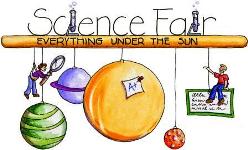





Published on Sep 05, 2023
The objective: The objective was to develop a bar soap (glycerin) with the active sunscreen ingredient octisalate (octyl salicylate). The sunscreen could be used on a daily basis and provide an SPF of at least 15
I surveyed 100 randomly selected individuals to determine if there was a need/desire for this product. I conducted research on the different types of skin cancer and methods of reducing the risk of it.
My research led me to select octisalate, a waterproof UVB agent, and glycerin as the base for the bar soap.
I created three different concentrations of the active ingredient: 0% (Control), 5%, and 10%. I used a chemical test to determine the effectiveness of the bar soaps compared to known SPFs (4, 15, and 30). I have conducted multiple tests to confirm the results.
I created a UV light source to provide a constant level of UV radiation. The solutions I prepared consisted of benzophenone, isopropanol, glacial acetic acid, and mineral oil. A precipitate formed at the bottom of the test tube.
The more precipitate, the less effective the product was at absorbing UV rays..
The test tube with the 5% concentration of the active ingredient (applied to its exterior) produced the same amount of precipitate (0.8 grams) as the test tube with SPF 15 sunscreen did.
Therefore, the 5% concentration of the active ingredient had an approximate SPF of 15. Concentrations exceeding this amount would not completely incorporate into the glycerin..
My conclusion is that regular use of sunscreen soap with an SPF of 15 would significantly decrease the risk of skin cancer. A study indicated that regular use of sunscreen up to age 18 could decrease the risk of contracting skin cancer by 78%.
The chemistry of this experiment involves a redox reaction. Benzophenone is reduced to yield benzopicanol (precipitate) and isopropanol is oxidized to form acetone.
The stoichiometry of this reaction is 2 molecules of benzophenone to 1 molecule of benzopicanol.
This project I created a glycerin bar soap with the active sunscreen ingredient octisalate (designed for daily-use) and
chemically tested its effectiveness.